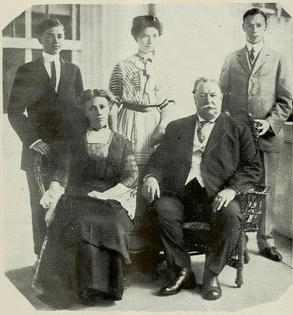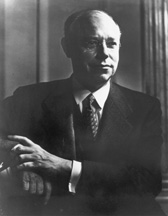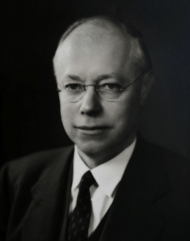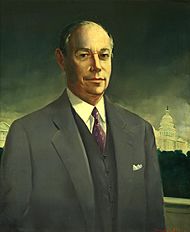Robert A. Taft facts for kids
Quick facts for kids
Robert A. Taft
|
|
|---|---|
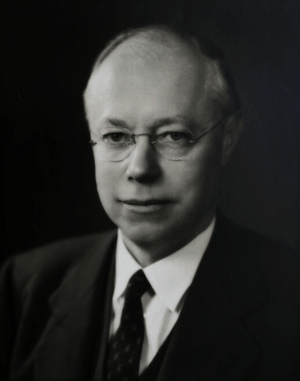
Taft in 1953
|
|
| United States Senator from Ohio |
|
| In office January 3, 1939 – July 31, 1953 |
|
| Preceded by | Robert J. Bulkley |
| Succeeded by | Thomas A. Burke |
| Senate Majority Leader | |
| In office January 3, 1953 – July 31, 1953 |
|
| Deputy | Leverett Saltonstall |
| Preceded by | Ernest McFarland |
| Succeeded by | William Knowland |
| Chair of the Senate Republican Policy Committee | |
| In office January 3, 1947 – January 3, 1953 |
|
| Leader | Wallace H. White Jr. Kenneth S. Wherry Styles Bridges |
| Preceded by | Position established |
| Succeeded by | William F. Knowland |
| Member of the Ohio Senate | |
| In office 1931–1933 |
|
| Speaker of the Ohio House of Representatives | |
| In office January 15, 1926 – January 2, 1927 |
|
| Preceded by | Harry D. Silver |
| Succeeded by | O. C. Gray |
| Member of the Ohio House of Representatives | |
| In office 1921–1931 |
|
| Personal details | |
| Born |
Robert Alphonso Taft
September 8, 1889 Cincinnati, Ohio, U.S. |
| Died | July 31, 1953 (aged 63) New York City, New York, U.S. |
| Political party | Republican |
| Spouse |
Martha Wheaton Bowers
(m. 1914) |
| Children | 4, including William and Robert |
| Parents | William Howard Taft (father) Nellie Herron (mother) |
| Relatives | Taft family |
| Education | Yale University (BA) Harvard University (LLB) |
| Signature |  |
Robert Alphonso Taft Sr. (born September 8, 1889 – died July 31, 1953) was an American politician and lawyer. He was a very important leader in the Republican Party. People often called him "Mr. Republican" because he was so central to the party's ideas.
Taft represented Ohio in the United States Senate. He was known for leading a group of Republicans and conservative Democrats. This group worked to stop the government from growing too much, especially against programs from the New Deal. He also helped create the Taft–Hartley Act in 1947. This law changed rules for labor unions.
Robert Taft was the older son of William Howard Taft, who was the 27th President of the United States. He was born in Cincinnati, Ohio. After studying law at Harvard Law School, he became a lawyer in Cincinnati. He also served in the Ohio state legislature from 1921 to 1933.
In 1938, Taft was elected to the U.S. Senate. He tried three times to become the Republican candidate for president. He often disagreed with more moderate Republicans like Thomas E. Dewey. Taft also believed the U.S. should not get involved in World War II before the Attack on Pearl Harbor in 1941.
He ran for president in 1940, 1948, and 1952. In 1952, he was a strong candidate, but Dwight D. Eisenhower won the nomination. Taft became the Senate Majority Leader in 1953. Sadly, he died later that year from cancer. In 1957, a Senate committee named him one of America's five greatest senators.
Contents
Robert Taft's Early Life and Education
Robert Taft was born in Cincinnati, Ohio, into a very famous political family. His grandfather, Alphonso Taft, was a U.S. Attorney General. His father, William Howard Taft, was both a President and a Chief Justice. His mother was Helen Louise "Nellie" Herron.
As a child, Robert lived in the Philippines for four years. His father was the Governor-General there. Robert was an excellent student. He was first in his class at the Taft School, Yale College (1910), and Harvard Law School (1913). He also edited the Harvard Law Review.
In 1913, Taft got the highest score on the Ohio bar exam. He worked as a lawyer in Cincinnati. Later, he and his brother, Charles Phelps Taft II, started their own law firm called Taft Stettinius & Hollister. This firm still uses his name today.
In 1914, he married Martha Wheaton Bowers. Robert was often seen as quiet and serious. Martha was outgoing and helped his political career a lot. In 1950, Martha had a serious stroke. She became unable to move easily and needed help. Robert took care of her faithfully. He would call her every night and read to her. This showed a caring side that many people didn't see.
Robert and Martha had four sons. Two of them, William Howard Taft III and Robert Taft Jr., also became important figures. William became an ambassador, and Robert Jr. was elected to the U.S. Senate. Their grandsons also continued the family's public service. Robert Alphonso "Bob" Taft III became the Governor of Ohio.
In 1917, the Tafts bought a farm in Indian Hill, Ohio. It was called Sky Farm and became their main home. Robert enjoyed growing strawberries and potatoes there. For summer vacations, the family often went to Murray Bay in Quebec, Canada.
Robert Taft's Public Service in Ohio
When the United States entered World War I in 1917, Taft tried to join the army. But he was not accepted because of his poor eyesight. Instead, he worked for the Food and Drug Administration. There, he met Herbert Hoover, who became a role model for him.
In 1918 and 1919, Taft worked in Paris. He was a legal adviser for Hoover's agency, which helped deliver food to Europe after the war. This experience made him distrust big government. He felt it was often inefficient and took away individual freedoms.
In 1920, he was elected to the Ohio House of Representatives. He became the Speaker of the House from 1926 to 1927. In 1930, he was elected to the Ohio Senate. He lost his re-election in 1932, which was his only election loss.
Taft was known for fighting against the Ku Klux Klan. He voted against their bills, like one to ban dancing on Sundays. He also led the fight against a bill that would make teachers read the Bible in public schools. Taft believed religion should be taught in churches, not schools.
During his time in the Ohio legislature, Taft worked to update the state's tax laws. He was a strong and loyal Republican. He was known for understanding complex issues very well. Even though he wasn't a great public speaker, his hard work and knowledge impressed many.
Robert Taft as a U.S. Senator
Taft was elected to the U.S. Senate in 1938. He defeated the current Democratic Senator, Robert J. Bulkley. Taft won by a large number of votes. His wife, Martha, was a big help in his campaign. The Tafts rented a home in Washington D.C. at first. In 1941, they bought a home in the Georgetown neighborhood.
Opposing the New Deal
In the Senate, Taft worked with conservative Democrats. Together, they formed a group that opposed the New Deal. The New Deal was a series of government programs started by President Franklin D. Roosevelt to help the country during the Great Depression. Taft believed these programs were wasteful. He thought private businesses should lead the economy, not the government.
He criticized government spending and high farm subsidies. He also opposed nationalized health insurance. However, he did support some social programs. For example, he supported public housing and federal aid for public schools.
Taft believed in limited government spending and a balanced budget. He wanted low taxes and policies that helped businesses grow. He also thought America needed a strong military, especially the Navy and Air Force. In foreign policy, he wanted the U.S. to stay out of European wars. He also opposed the military draft, believing it limited young people's freedom.
Views on World War II
Taft became very well known for strongly opposing the U.S. getting involved in World War II. He believed America should focus on its own problems. He thought a strong military and the protection of the Atlantic and Pacific Oceans were enough to keep America safe.
Before the attack on Pearl Harbor in 1941, Taft opposed giving aid to countries fighting Germany. Many people, including other Republicans, disagreed with him. After Pearl Harbor, Taft fully supported the war effort. But he still didn't trust the idea of America joining military alliances after the war, like NATO.
Taft was also the only senator to speak against the internment of Japanese Americans during the war.
Re-election in 1944
In 1944, Taft almost lost his re-election to the Senate. His opponent, William G. Pickrel, had strong support from labor unions. Taft won by less than one percent of the votes. He lost in big cities but won in rural areas and small towns. After this close election, Taft became the chairman of the Senate Republican Conference.
Views on the United Nations
In 1945, Taft was one of only seven senators who opposed the United States fully joining the United Nations.
The Taft–Hartley Labor Act
When Republicans gained control of Congress in 1947, Taft became the head of the Senate Labor Committee. He believed the Wagner Act gave too much power to labor unions. So, he wrote the Taft–Hartley Act in 1947. This law is still important today. It made some union practices illegal and allowed the President to stop strikes that threatened the country.
President Harry S. Truman did not like the bill and tried to stop it. But Taft convinced Congress to pass it anyway.
Second Senate Term and Foreign Policy
From 1947 to 1949, when Republicans controlled the Senate, Taft was a key leader in setting domestic policy. He helped pass the Housing Act of 1949. This law provided money for clearing slums and building low-income housing.
In foreign policy, Taft remained a non-interventionist. He didn't see the Soviet Union as the biggest threat. He thought big government and too much spending were bigger dangers. He supported the Truman Doctrine (which aimed to stop the spread of communism). He also approved the Marshall Plan (which helped rebuild Europe). However, he opposed NATO, believing it was unnecessary and might provoke the Soviets.
Taft also strongly criticized President Truman's handling of the Korean War. He questioned whether the President had the right to send troops without Congress's approval.
Re-election in 1950
In 1950, Taft ran for re-election to the Senate again. He campaigned very hard, visiting many factories and giving speeches. He won his third term by a very large margin. This victory cemented his nickname "Mr. Republican." He was seen as the main voice for conservative ideas in the Republican Party.
Presidential Ambitions
Taft tried three times to become the Republican candidate for president.
1940 and 1944 Campaigns
Taft first sought the Republican presidential nomination in 1940. However, he lost to Wendell Willkie. Many Republicans didn't like Taft's views on foreign policy. He believed the U.S. should not get involved in other countries' wars.
In 1944, Taft did not run for president. He supported another conservative, Governor John W. Bricker of Ohio. But Bricker also lost the nomination to Thomas E. Dewey.
1948 and 1952 Campaigns
In 1948, Taft tried again for the nomination but lost to Dewey. Dewey then lost the election to President Harry S. Truman.
Taft's third and final try for the nomination was in 1952. He was seen as the favorite. He had strong support from the conservative wing of the party. However, Dwight D. Eisenhower, a very popular general from World War II, decided to run. Eisenhower was worried that Taft's views on foreign policy, especially his opposition to NATO, might weaken the U.S. during the Cold War.
The fight between Taft and Eisenhower for the nomination was very close and intense. At the Republican Convention in Chicago, they were almost tied in delegate votes. Eisenhower's team argued that Taft's supporters had unfairly taken delegate spots in some states. The convention voted to support Eisenhower's side, which helped him win the nomination.
Taft was disappointed and felt he had been treated unfairly. But he still publicly supported Eisenhower. Later, Taft and Eisenhower met and agreed on many issues, especially domestic policies. Their main differences were about foreign policy. Eisenhower strongly believed in NATO and fighting communism.
Senate Majority Leader
After Eisenhower won the presidency, Taft became the Senate Majority Leader in 1953. He strongly supported Eisenhower's plans for the country. He also tried to stop the extreme actions of Senator Joseph McCarthy, who was known for accusing people of being communists.
By April 1953, Eisenhower and Taft had become friends. Taft praised Eisenhower, and many saw him as the most powerful person in Congress. It seemed that losing the presidential race had made Taft less focused on politics and more open to working with others.
Death and Legacy
In early 1953, Taft started feeling pain. Doctors found out he had cancer. On June 10, 1953, Taft announced his illness to the public. He transferred his duties as Senate Majority Leader to Senator William F. Knowland. He hoped to recover and return to work.
However, Taft's health got worse. On July 31, 1953, he died in New York City. His body was placed in the United States Capitol rotunda. Thousands of people came to pay their respects. A memorial service was held, attended by President Eisenhower and many other important leaders. He was buried in Cincinnati, Ohio.
In 1957, a committee led by Senator John F. Kennedy chose Taft as one of five great senators. Their portraits were placed in the President's Room in the Senate. Taft is still remembered by historians as one of the most powerful senators of the 20th century.
Memorial
There is a memorial for Robert A. Taft north of the Capitol building. It has a 10-foot statue of him and a bell tower.
See also
 In Spanish: Robert Taft para niños
In Spanish: Robert Taft para niños
- List of United States Congress members who died in office (1950–1999)


